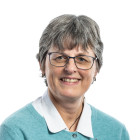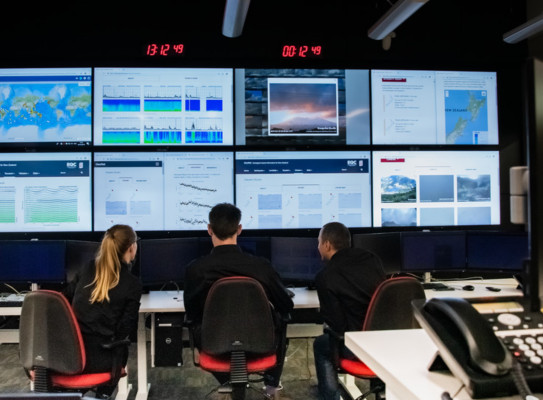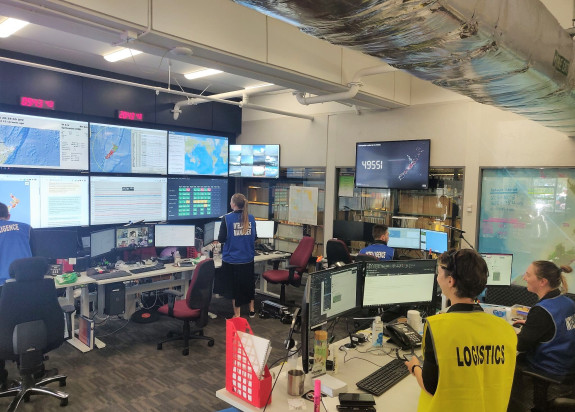
Celebrating three years of GNS Science’s National Geohazards Monitoring Centre

Powered by GeoNet and GNS Science experts, we’re celebrating the third birthday of our National Geohazards Monitoring Centre / Te Puna Mōrearea i te Rū (NGMC). The centre provides around-the-clock monitoring of the four main geohazards in Aotearoa New Zealand – earthquakes, tsunami, volcanoes, and landslides.
Staffed by geohazard analysts who are monitoring screens and data around the clock, the centre is built upon decades of work that GNS Science and the GeoNet programme have done with the Earthquake Commission and Toitū Te Whenua Land Information New Zealand.
Working in three shifts over a 24-hour period, Geohazard Analysts ensure that all events are captured and analysed as soon as they happen. When a significant event occurs, the NGMC team activate a team of on-call duty officers from across GNS Science. Prior to the NGMC, on-call duty officers would receive automated messages – quickly firing up their laptop and analysing these events themselves. They’d often be working at home with remote monitoring tools and could have been fast asleep.
Now, when an event occurs, we can hit the ground running to provide information fast to decision makers so that they can make efficient and accurate warnings to the public.

Since its launch, the centre has located nearly 65,000 earthquakes and has played a vital role in GNS Science’s contribution to national event responses including the rare ‘three tsunami day’ on 5 March this year, and the Whakaari/White Island eruption in December 2019.
In situations like 5 March, it’s all about a coordinated effort across GNS Science and with partners like the National Emergency Management Agency
“The NGMC has transformed our ability to do rapid event analysis and response initiation. It has streamlined how we gather and deliver information and data from the GeoNet network – not just in immediate event response, but also in our science response where we work out what has happened and what might happen next”.
There have been other changes too. ‘Ghost quakes’ – instances in which GeoNet’s sensitive monitoring equipment confuses seismic waves from a distant location for a small local event – are a thing of the past. Within moments, each and every earthquake is checked before it gets posted to the GeoNet website.
New Zealanders can have confidence that any earthquake we report is a real event – no more worrying about seemingly local events that actually never occurred!
Improvements to the centre are constantly being driven by the leading science being done at GNS Science and with collaborators around Aotearoa and internationally.
The centre is funded through the Ministry of Business Innovation and Employment’s Strategic Science Investment Fund and is also supported by the National Emergency Management Agency.
